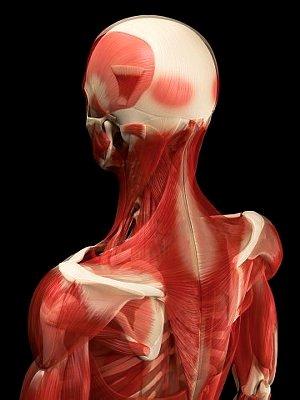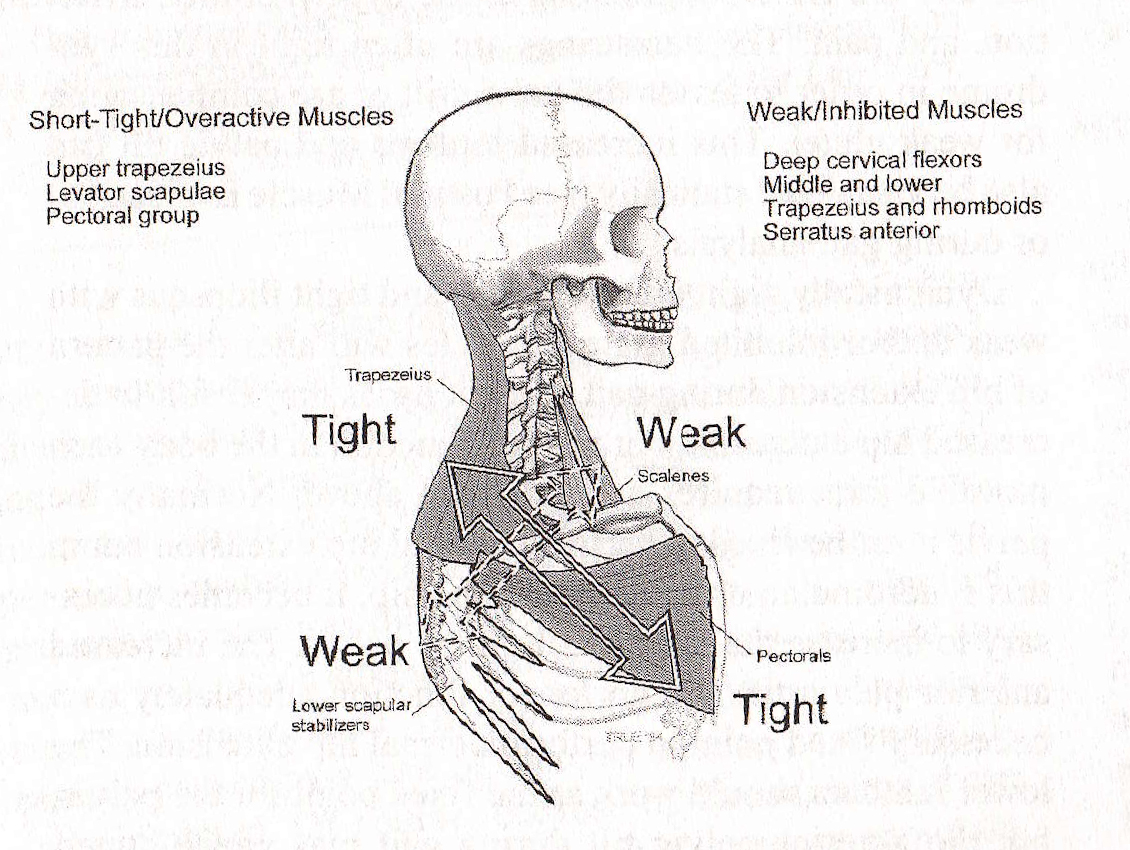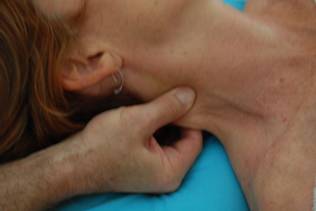The Neck
(1) it furnishes support and stability for the head,
(2) its articulating vertebral facets allow for the head’s range of motion, and
(3) it provides housing and transport for the spinal cord and the vertebral artery.
Changes from the normal posture of the head may result from extrinsic or intrinsic trauma, fatigue, work habits, psychologic posturing or poorly adjusted bifocal glasses. Normally the head's center of gravity is located at a point just anterior to the cervical spine and just superior to the temporomandibular joint. For every inch that the center of gravity moves forward, the cervical spine is subject to increasing forces of compression. This is in addition to the force of the weight of the head. The head weighs 10% of the body’s weight. For every one (1) inch of forward head position, the compressive force on the neck increases an additional 10%. If the head weighs 15 pounds, the head held forward 1 inch produces a compressive load in the cervical spine equivalent to 30 pounds of head weight. The head always rules the body's position and the body adjusts itself under the head.


The antagonistic muscle groups (those anterior, posterior, and lateral in the neck and upper thorax) balance the head and cervical spine without undue stress and with the least amount of energy expenditure. The shoulder girdles control the anterior-posterior position of the head and cervical spine.
In this seminar you will learn:
- Differential evaluation between Levator Scapula vs. Upper Trapezius involvement.
- Forward Head Posture (FHP) effects on posture, neck function, headaches and more.
- Laws of Physiology and how to APPLY them in your clinical setting for increased results and increased client compliance/repeat visits.
- Manual Muscle Testing to both verify the results of your therapy AND to reinforce and verify your results with your clients.
- Strategies to help yourself as well as your clients. As my great teacher admonished, “As long as you’re in the health care business, it wouldn’t hurt to have some.”
Please know the Origin, Insertion and Actions of the following muscles:
- Upper Trapezius
- Levator Scapula
- Splenius
- Longus Cervicis/Capitis
- Sternocleidomastoid
- Suboccipitals
I am looking forward to sharing this knowledge with you!
Thomas Liberto, LMT, Personal Trainer

For Additional Information or Scheduling:
Thomas Liberto, LMT, Personal Trainer
Lake Worth, FL 33460
Telephone: 561-420-3272
Email: thomas@libertotherapy.com